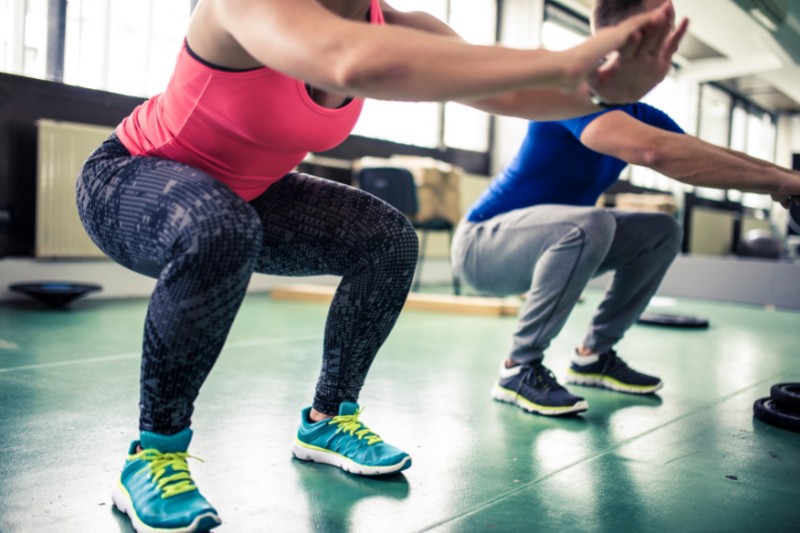If you generally experience knee pain when squatting, chances are you’re gonna avoid doing that particular exercise. But before you give it up, check out some of the options I provide below. I believe you CAN find a way to squat that works for your knees.
Being able to squat is something you do NOT want to give up unless absolutely necessary. We call squatting a “functional” movement, meaning you use this motion in your daily activities (e.g., getting something out of a lower cabinet, lowering yourself down onto the toilet, picking shoes up off the floor). And if you’re older, being able to squat could very well keep you independent and able to continue living in your own home.
Here are 6 tips to eliminate knee pain when squatting
First, LET’S TALK FORM. As you lower into a squat, you want to stick your hips out as though you’re sitting in a chair, bend forward at the hips, lean the chest a bit over the thighs, and keep your weight in your heels. Keep your knees from going past the toes…too much bending at the knees will overstress a sensitive knee joint.
No matter the type of squat you do, as you rise up to standing KEEP MORE WEIGHT IN HEELS and less in the balls of the feet. I always remind clients, press through your heels on the way up. Also think about standing up using your butt muscles and less the fronts of the legs. This method will keep a good deal of load off your knees.
TRY A PLIE SQUAT. You take a wide stance and turn your toes out to the corners. This can also work the inner thighs a bit more. Remember to keep a good deal of weight in your heels on the way up.
BALL SQUATS. These can really be helpful for folks with knee pain when squatting. Using a large exercise ball, get against a wall and place the ball between your lower back and the wall. Walk your feet out (you’ll feel like you’re really leaning into the ball) so that when you squat down, the knees stay right over the ankles. As you squat, you’ll stay completely upright. Keep weight in the heels and focus on using your glutes as you come back up. This is also a lower-back-friendly way to do a squat.
KEEP IT SMALL. Perhaps you need to keep your range of motion smaller. Don’t squat down quite as low as you think you should; stop before you hit that painful spot.
USE A WIDE STANCE. Some folks have success when they keep their feet wider than shoulder width. Still keep the toes pointing forward. And remember to use those heels.

